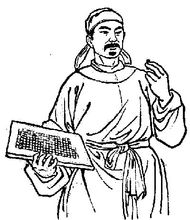A few years ago, I purchased some prints from the Stele Forest (or The Beilin Museum) in Xi’an. The texts were written by ancient Chinese calligraphers onto soft rice paper with ink that was made of animal glue and pine oil, and transformed to the stone steles, and copied to new paper through a process called ink rubbing. The background is black, and the characters are white. This was printing in China before Bi Sheng, who invented movable type. However, it is Johannes Gutenberg’s printing press that revolutionarily changed the way we read. More printing machines were invented after him to increase the efficiency and quality of printing.

Without Gutenberg, texts may exist on stone steles, bamboo, and silk for readers, but the printing processes after his printing press all demanded paper (not soft paper) until texts began to exist as digital texts. I learned from the documentary and the readings that the quality of the paper is essential to the success of Gutenberg’s invention. Vellum was proved to be unsuitable for printing. The soft paper became one of the obstacles to the development of movable type in ancient China. Now, environment protection leads many to switch to eBook to save trees. The eBook seems to further “separate” the book from the text: the book appears on a screen, while the text lives in the storage of a Kindle or a server far away.
The section in William and Abbott’s book demonstrates different stages in which a text is altered. The roles of authors, editors, compositors, printers, publishers, booksellers all affect the text and the book which the reader obtains. It is unsure whether the digital text makes the process simple or more complicated. Digital tools and media enable some straightforward and high-fidelity channels for readers to interact with the text but may downgrade or lose the text.



I like this, ‘the text lives far away somewhere else’. The printing as you pointed out is even older, and the baren or buren of woodblock printing and other things did travel, by ships. Ideas spread, and the characters of Chinese are/were surely reproducible, such as in Monkey, or the Tale of Genji, even if by hand-which is considered an Art. Tales also traveled by oral literature, as tales, such as Icelandic sagas and around a campfire, or the theatre. But yours is an interesting post and I like the points you raise about the changes to the printed word and how it deserves to be left alone, and what will be seen if on a server, when many cultures have only begun to get books, or small children, or the poor in mountains or Africa, or how that will be modified or deteriorate. What information will they afford? And at who’s discretion? Who will be the Gatekeeper?